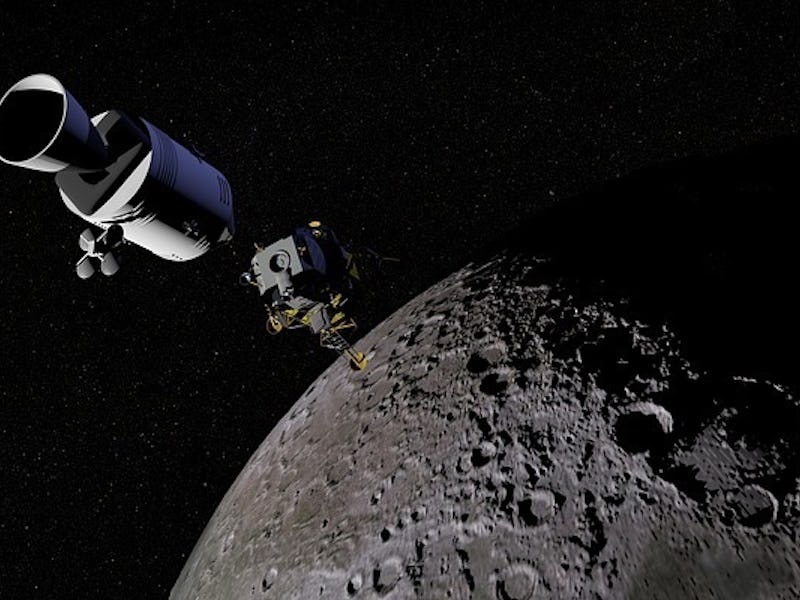The Five Big Things on Moon Express's Future Lunar Shopping List
We're talking solving the energy crisis and extended spaceflight here.

Moon rocks are going to be real.
Now that Moon Express has approval from the U.S. government to send a lander to the moon, it’s time to prepare for an onslaught of lunar minerals that we’ll be graced with.
The unmanned lander going up in the next year isn’t going to return anything to Earth, but Bob Richards, the CEO and co-founder of Moon Express, has stated that his real goal is to mine the moon. This isn’t crazytalk: the moon contains a wealth of elements and minerals that are rare or hard to access here on Earth. And Moon Express is setting itself up to capitalize on that in the near future, with Richards hoping to bring back lunar treasures in the early 2020s.
Here’s what Moon Express already has a shopping list for what they’d like to find.
Iron
Iron is relatively common on Earth, but it makes up a large part of the minerals on the surface of the moon. Since it’s so commonly used in industry, a new source of iron would be a valuable find on the moon. Lunar iron mining might also come with other elements commonly used in industry like aluminum and silicon, which are also common on the moon’s surface.
Platinum
Along with its obvious value for jewelry, platinum and other metals in the platinum group are used in electronics and cancer treatments. They are non-reactive in the body, good conductors, and extremely difficult to corrode, which is part of what makes them so valuable. The metals potentially on the moon include ruthenium, rhodium, palladium, osmium, iridium, and platinum itself.
Helium-3
The interior of the new Wendelstein 7-X nuclear fusion experimental device at the Max Planck Institute of Plasma Physics in Greifswald, Germany.
Helium-3 is extremely rare on Earth, thanks to our magnetic field. And that’s too bad if you’re trying to find the perfect fuel for nuclear fusion that isn’t radioactive and won’t produce dangerous waste products. Luckily for proponents of nuclear fusion as the energy source of the future, helium-3 is extremely abundant on the moon. Because it’s so rare on Earth, it’s still unclear if helium-3 would solve our energy woes, but hauling some back from the moon could provide answers pretty quickly.
Unknown Alloys of Nickel, Cobalt, and Iron
Because of the low gravity on the moon, it’s possible that these common metals can be manufactured into new combinations that wouldn’t form on the Earth’s surface, says Naveen Jain, the other co-founder of Moon Express. And even if that’s not possible, new sources of nickel and cobalt are extremely valuable for future space missions because they are so rare on Earth and necessary in jet engines.
Water
Region on the south pole of the moon with large craters that could contain ice.
On the moon, it would be ice, and could be turned into the fuel required for spaceflight. Because it’s so rare in space, having a source from the moon would be extremely valuable. Water can also be used as a source of oxygen for future manned missions. This would minimize the amount of material rockets have to carry on take off. Not only would this allow them to be active for longer, it would let them carry more into space, reducing the costs of takeoff for individual missions. And perhaps most importantly, if we could mine water from the moon, commercial spaceflight can really, truly, finally take off.